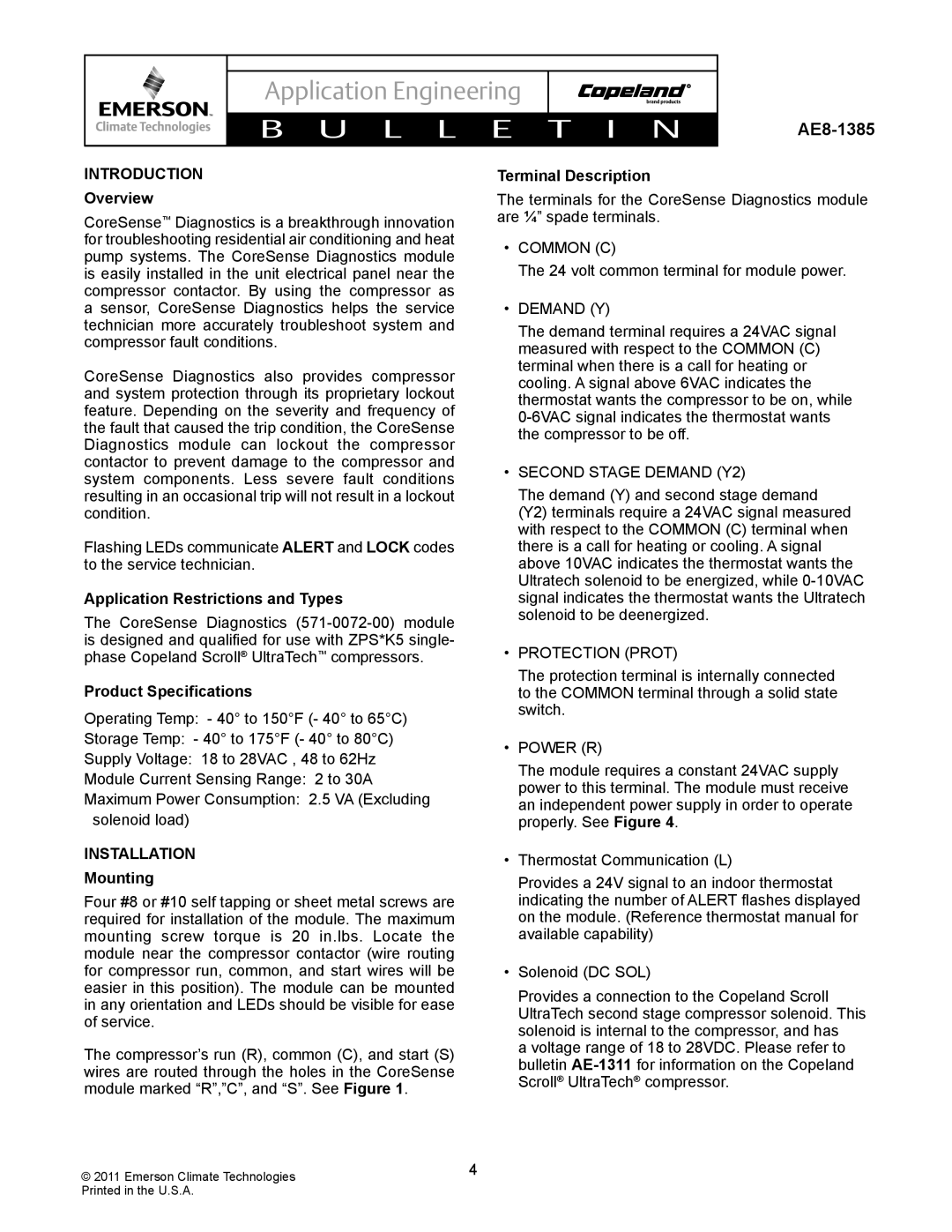AE8-1385 specifications
The Emerson AE8-1385 is a cutting-edge automation solution designed to enhance operational efficiency and reliability in various industrial applications. This advanced device exemplifies Emerson’s commitment to innovation, boasting features that cater to the demands of modern industries, specifically in process control, monitoring, and data acquisition.One of the standout features of the AE8-1385 is its robust communication capabilities. It supports multiple communication protocols, including Modbus, Ethernet/IP, and Profibus, allowing it to seamlessly integrate with existing systems and facilitate real-time data exchange. This flexibility ensures that users can connect the AE8-1385 to a wide variety of equipment and software, promoting interoperability across the production environment.
In terms of technology, the AE8-1385 integrates state-of-the-art sensing and actuation methods to provide accurate and reliable measurements. Its advanced signal processing capabilities enhance the clarity of data collected from various sensors, enabling precise control and monitoring of critical processes. The device is engineered with high-quality materials, ensuring durability and performance in harsh industrial settings.
Additionally, the AE8-1385 features a user-friendly interface that simplifies operation and reduces training time for personnel. The intuitive design allows operators to access vital information quickly, making modifications to settings or responding to alarms easier and more efficient. This focus on usability not only enhances productivity but also improves response times in critical situations.
Another essential characteristic of the AE8-1385 is its scalability. It can be deployed in small-scale applications or expanded to support larger, more complex systems as operational requirements evolve. This adaptability makes it a valuable investment for companies looking to future-proof their automation solutions.
The AE8-1385 is also equipped with advanced security features that protect against unauthorized access and data breaches, an essential consideration in today’s increasingly interconnected industrial landscape. This added layer of security ensures that sensitive operational information remains confidential and secure.
In summary, the Emerson AE8-1385 is an innovative automation solution that combines versatile communication capabilities, advanced sensing technology, user-friendly design, scalability, and robust security features. Its integration into industrial processes can lead to enhanced efficiency, improved data management, and increased operational reliability, making it an ideal choice for industries prioritizing modernization and performance.

